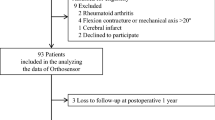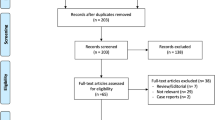Abstract
Total knee replacement surgery is highly successful in terms of component survival. However, approximately 20 % of patients report dissatisfaction with their outcome. It is speculated that many of these patients may have soft tissue imbalance or mal-tracking components which can lead to stiffness or subtle instability. Surgeons currently rely on subjective feel and visual estimation to determine if the total knee has proper soft tissue balance. Surgical experience and case volume play a major role in each surgeon’s relative skill in balancing the knee properly.
Sensor technology incorporates embedded microelectronics in a trial tibial insert. While the surgeons perform a passive range of motion with trial components in place, quantified pounds of pressure and tracking patterns in the medial and lateral compartments are demonstrated on a graphical interface. The surgeon can decide whether to accept the knee balance, perform a soft tissue release, or redo a bone cut. If soft tissue balancing is performed, the surgeon can visualize changes in compartment pressures on the graphical interface as sequential soft tissue releases are performed with a pie-crusting method. Minimal bone recuts are being used more frequently.
A multicenter evaluation utilizing sensor technology has demonstrated significantly improved outcomes when the compartment pressures were within 15 lb of each other.
Disclosure
The author does receive benefits as result of being a consultant and on the advisory board of the commercial party related directly to the subject of this entry.
Access this chapter
Tax calculation will be finalised at checkout
Purchases are for personal use only
Similar content being viewed by others
References
Mohamed NN, Barrett J, Katz J, Baron JN, Wright J, et al. Epidemiology of total knee replacement in the United States Medicare population. JBJS. 2005;87(6):1222–8.
Kurtz S, Ong K, Lau E, et al. Projections of primary and revision hip and knee arthroplasty in the United States from 2005 to 2030. J Bone Joint Surg Am. 2007;89(4):780–5.
Bozic KJ, Kurtz SM, Lau E, et al. The epidemiology of revision total knee arthroplasty in the United States. Clin Orthop Relat Res. 2010;468:45–51.
Fehring T, Odum S, Griffin W, et al. Early failures in total knee arthroplasty. Clin Orthop Relat Res. 2001;392:315–8.
Lonner J, Silliski J, Scott R. Prodromes of failure in total knee arthroplasty. J Arthroplasty. 1999;14(4):488–92.
Sharkey PF, Hozack WJ, Rothman RH, et al. Insall award paper: why are total knee arthroplasties failing today? Clin Orthop Relat Res. 2002;404:7–13.
Johnson D, Dennis S, Kindsfater K, et al. Evaluation of total knee arthroplasty performed with and without computer navigation: a bilateral total knee arthroplasty study. J Arthroplasty. 2013;28:455–8.
Laskin R, Beksac B. Computer-assisted navigation in TKA. Clin Orthop Relat Res. 2006;452:127–31.
De Steiger RN, Liu YL, Graves SE. Computer navigation for total knee arthroplasty reduces revision rate for patients less than sixty-five years of age. J Bone Joint Surg Am. 2015;97(8):635–42.
Harvie P, Sloan K, Beaver RJ. Computer navigation vs. conventional total knee arthroplasty: five-year functional results of a prospective randomized trial. J Arthroplasty. 2012;27:667–72.
Ferrara F, Cipriani A, Magarelli N, Rapisarda S, De Santis V, Burrofato A, Leone A, Bonomo L. Implant positioning in TKA: comparison between conventional and patient-specific instrumentation. Orthopedics. 2015;38(4):e271–80.
Jiang J, Kang X, Lin Q, et al. Accuracy of patient-specific instrumentation compared with conventional instrumentation in total knee arthroplasty. Orthopedics. 2015;38(4):e305–13.
Vessely MB, Whaley AL, Harmsen WS, Schleck CD, Berry DJ. The Chitranjan Ranawat Award: long-term survivorship and failure modes of 1000 cemented condylar total knee arthroplasties. Clin Orthop Relat Res. 2006;452:28–34.
Mont MA, Pivec R, Kapadia BH, et al. Long-term survivorship of cementless total knee arthroplasty: a systematic review of the literature and meta-analysis. J Knee Surg. 2013;27(5):369–76.
Noble PC, Conditt MA, Cook KF, Mathis KB. The John Insall Award: patient expectations affect satisfaction with total knee arthroplasty. Clin Orthop Relat Res. 2006;452:35–43.
Bullens PH, van Loon CJ, de Waal Malefijt MC, Laan RF, Veth RP. Patient satisfaction after total knee arthroplasty: a comparison between subjective and objective outcome assessments. J Arthroplasty. 2001;16:740–7.
Dickstein R, Heffes Y, El S, Markowitz E. Total knee arthroplasty in the elderly: patients’ self-appraisal 6 and 12 months postoperatively. Gerontology. 1998;44:204–10.
Suda AJ, Seeger JB, Bitsch RG, Krueger M, Clarius M. Are patients’ expectations of hip and knee arthroplasty fulfilled? A prospective study of 130 patients. Orthopedics. 2010;33:76–80.
Mulhall KJ, Ghomrawi HM, Scully S, et al. Current etiologies and modes of failure in total knee arthroplasty revision. Clin Orthop Relat Res. 2006;446:45–50.
Wylde V, Hewlett S, Learmonth ID, et al. Persistent pain after joint replacement: prevalence, sensory qualities, and postoperative determinants. Pain. 2011;152(3):566–72.
D’Lima DD, Patil S, Steklov N, et al. Dynamic intraoperative ligament balancing in total knee arthroplasty. Clin Orthop Relat Res. 2007;463:208–12.
Schnaser E, Lee YY, Boettner F, Gonzalez Della Valle A. The position of the patella and extensor mechanism affects intraoperative compartmental loads during total knee arthroplasty: a pilot study using intraoperative sensing to guide soft tissue balance. J Arthroplasty. 2015;30(8):1348–53.
Gustke KA, Golladay GJ, Roche MW, Elson LC, Anderson CR. A new method for defining balance. Promising short-term clinical outcomes of sensor-guided TKA. J Arthroplasty. 2014;29(5):955–60.
Gustke K, Golladay G, Roche M, Elson L, Anderson C. Primary TKA patients with quantifiably balanced soft-tissue achieve significant clinical gains sooner than unbalanced patients. Adv Orthop. 2014;2014:628695. doi:10.1155/2014/628695. Epub 18 Aug 2014.
Bellemans J, Vandenneucker H, Lauwe JV, Victor J. A new surgical technique for medial collateral ligament balancing. J Arthroplasty. 2010;25:1151–6.
Walker PS, Meere PA, Bell CP. Effects of surgical variables in balancing of total knee replacements using an instrumented tibial trial. Knee. 2013;21:156–61.
Gustke KA. Soft-tissue and alignment correction: the use of smart trials in total knee replacement. Bone Joint J. 2014;96-B(11 Supple A):78–83.
Insall JN, Binazzi R, Soudry M, Mestriner LA. Total knee arthroplasty. Clin Orthop Relat Res. 1985;192:13–22.
Wasielewki RC, Galante JO, Leightly RM. Wear patterns on retrieved polyethylene tibial inserts and their relationship to technical considerations during total knee arthroplasty. Clin Orthop Relat Res. 1994;299:31–43.
Howell SM, Papadopoulos S, Kuznik K, Ghaly LR, Hull ML. Does varus alignment adversely affect implant survival and function six years after kinematically aligned total knee arthroplasty? Int Orthop. 2015;39:2117–24 [Epub ahead of print].
Okamoto S, Okazaki K, Mitsuyasu H, Matsuda S, Iwamoto Y. Lateral soft tissue laxity increases but medial laxity does not contract with varus deformity in total knee arthroplasty. Clin Orthop Relat Res. 2013;471(4):1334–42.
Babazadeh S, Stoney JD, Lim K, Choong PFM. The relevance of ligament balancing in total knee arthroplasty: how important is it? A systematic review of the literature. Orthop Rev. 2009;1:e26.
Whiteside LA. Soft tissue balancing. J Arthroplasty. 2002;17 Suppl 1:23–7.
Mihalko WM, Saleh KJ, Krackow KA, Whiteside LA. Soft-tissue balancing during total knee arthroplasty in the varus knee. J Am Acad Orthop Surg. 2009;17(12):766–74.
Wasielewski RC, Galat DD, Komistek RD. Correlation of compartment pressure data from an intraoperative sensing device with postoperative fluoroscopic kinematic results in TKA patients. J Biomech. 2005;38:333–9.
Author information
Authors and Affiliations
Corresponding author
Editor information
Editors and Affiliations
Rights and permissions
Copyright information
© 2016 Springer International Publishing Switzerland
About this entry
Cite this entry
Gustke, K. (2016). Sensor Technology in Total Knee Arthroplasty. In: Scuderi, G., Tria, A. (eds) Minimally Invasive Surgery in Orthopedics. Springer, Cham. https://doi.org/10.1007/978-3-319-34109-5_125
Download citation
DOI: https://doi.org/10.1007/978-3-319-34109-5_125
Published:
Publisher Name: Springer, Cham
Print ISBN: 978-3-319-34107-1
Online ISBN: 978-3-319-34109-5
eBook Packages: MedicineReference Module Medicine




